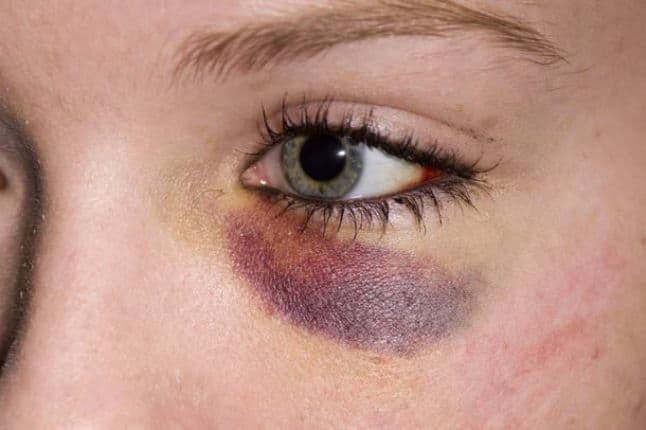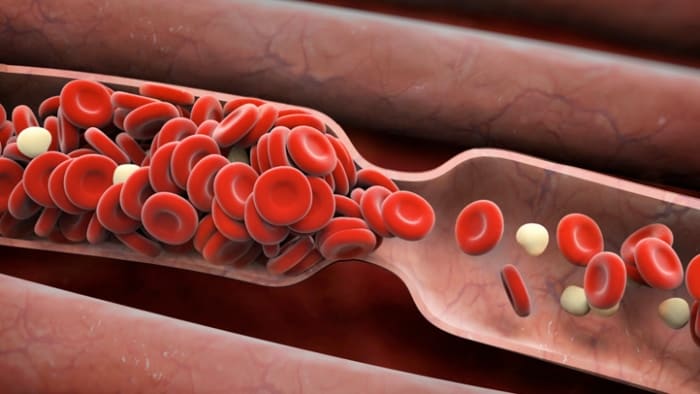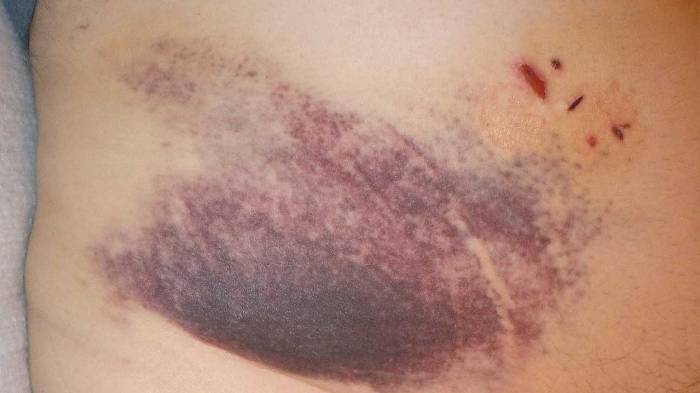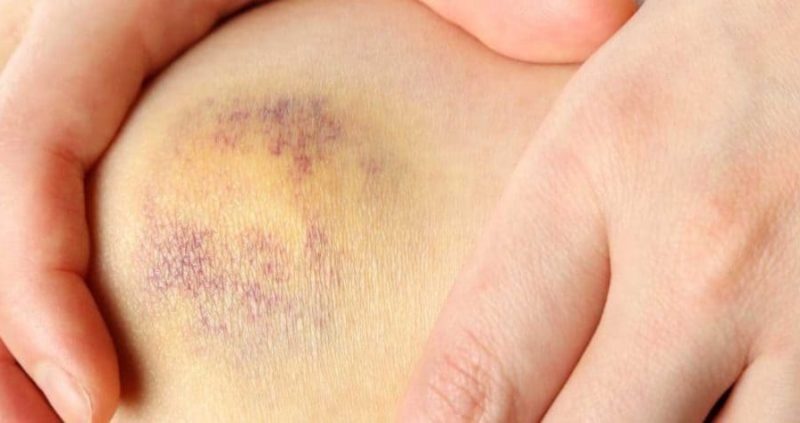Everyone has encountered skin problems at some point in their lives. Pimples, acnes, and patches on the skin are a worrying cause for most of us, especially women. Some of these are quite common and go away with time, while others, not so much.
Ecchymosis is one such medical condition that you need to be aware of. So, just keep reading to find out more about it.
Table of Contents
What is Ecchymosis?

You can distinguish ecchymosis by a reddish or bluish patch on the skin that is caused by a medical condition. This discoloration of the skin occurs due to escape of blood from ruptured blood vessels into the capillaries.
It is a purple rash caused by the skin due to internal bleeding from small blood vessels resulted from a rupture within the blood vessel causing the blood to leak into the layer of the skin.
You might sometimes mistake or falsely judge it as a bruise but the two are entirely different terms. You can differentiate a bruise from it by its diameter which is 1 cm.
The bruise is a blood leaking into the thin layer of the skin as a result of accidents while ecchymosis occurred spontaneously as a consequence of an underlying medical condition.
Ecchymosis is associated with the condition called purpura.
Purpura is a purplish colored patch of the skin caused due to blood leaking into the capillaries and the large size of which is known as ecchymosis while those of small size are known as petichiae.
Thus, purpura involves the platelets with ecchymosis. The condition of purpura and ecchymosis may neither have a normal nor a low platelet count.
Causes Of Ecchymosis
There are no reasons for you to be afraid if you have contracted ecchymosis. Ecchymosis is generally harmless and not a genetic condition or ailment.
But, it can be a symptom of one or more serious medical condition that needs you to seek medical attention and treatment. The start of ecchymosis can be a mild burning sensation in the body or can be a more complex medical condition.
The general causes due to which you might get ecchymosis are blunt trauma and bruising.
A bruise is medically termed a contusion. They are said to be a result of some degree of injury to the blood vessels in the skin.
These bruises that you get easily may be a result of an insignificant compression of skin, rupture of blood vessels that seep into the thin layer of the skin or in the mucous membrane or any damage in the skin to allow the blood to go out of the skin surface.
The accumulation of blood inside the skin layer is the cause of the reddish or purplish discoloration of the skin.
Ecchymosis in kids is caused due to an injury to the skin or mucous membrane. You can find Ecchymosis behind the ear of these kids due to this reason.
Ecchymosis of the foot might happen to you if you fall down while playing.
Fights with friends can give you Ecchymosis of the eye or black eyes. Physical abuse is said to be another reason or cause for this in many children. Another name commonly used for Ecchymosis is a black eye.
Here Are A Few Major Causes Of Ecchymosis
- Medical treatment, including radiation and chemotherapy
- Accidents resulting in trauma or injuries
- Autoimmune disorders
- Reactions caused due to allergies
- Viral infection or illness affecting blood clotting
- Thrombocytopenia
- Medical treatment, including radiation and chemotherapy
- Bruise
- Birth
- Aging skin
- Leukemia
- Medicines such as warfarin, heparin, aspirin, steroids
Few Conditions That Cause Or Facilitate It Are
i. Cirrhosis

The functioning of the liver is affected due to this condition. This leads to irregularities in blood cells, which could be the reason for the appearance of these spots on your skin.
ii. Leukemia

This dreadful disease is identified by an abnormal increase in the number of white blood cells (leukocytes). It may also produce Ecchymosis in your skin.
iii. Acute Renal Failure
This again is a cause of ecchymosis. Acute failure of your kidney can result into the accumulation of waste material in the blood.
iv. Malignancy
In many patients suffering from it, malignancy is found to be the underlying cause.
v. Liver Disease
Liver is responsible for a number of functions including storage and purification of blood. A disorder in your liver can affect blood filtering and storage and cause Ecchymosis.
vi. Multiple Myeloma
This disease causes a rapid growth of plasma cells in bone marrow. This leads to tumours and blood abnormalities resulting in Ecchymosis.
vii. Myelofibrosis
This condition results in a fibrosis of the bone marrow and gives rise to problems like anaemia. Reduced blood count often causes Ecchymosis.
viii. Grey Turner’s Syndrome
This normally happens as a result of acute pancreatitis which may lead to even death in rare cases.
Cause Of Spontaneous Ecchymosis

If even after you have it treated by your physicians these patches come back, then you might be suffering from spontaneous ecchymosis. You can identify spontaneous ecchymosis by the bruising caused due to an injury and from the non-stop bleeding that will follow.
In the case of spontaneous bruising with minimal injury, you will notice symptoms like gums that bleed easily, continuous gum bleeding after dental procedures and bleeding into your joints.
Blood clots are your body’s mechanism to protect your body from the excessive bleeding that is a result of an accident or a trauma.
Let’s check out a few reasons for spontaneous ecchymosis:
- Caused by Deficiencies in clotting factors, missing clotting factors, or changes in platelet function.
- Clotting factors deficiency causes deeper bleeding than platelet defects. You may notice bleeding into joints, muscle, and abdomen. These disorders can be inherited, may be the onset of some disease or may be side effects of drugs or medication.
- Von Willebrand’s disease: if you have this disease you are likely to bleed more easily. It is passed on from parent to child, affecting the parents alike. Usually, the bleeding problems are nothing to be worried about. In severe cases, treatment is available to support normal blood clotting.
- During menstruations you might experience nosebleeds, bleeding from your gums or excessive bleeding during the cycle. Some of you may have to bleed from the intestine. Other reasons for increased bleeding are surgery or dental work.
- Severe bleeding and spontaneous bleeding into joints usually do not occur and is caused by some deficiency or malfunction of a specific protein called von Willebrand factor, in the blood that helps the body form these blood clots. Since the blood count is usually normal, the best way for you to test it is measuring the bleeding time.
- Hemophilia: Hemophilia A, B, and C are diseases that you can only inherit. Signs and symptoms are: large or deep bruises, pain in joints and swelling caused by internal bleeding, bleeding within muscles and blood in urine or stool, prolonged bleeding from cuts or injuries, or after surgery or tooth extraction
- Immune System-Related Diseases: This is a clinical syndrome in which a decreased number of circulating platelets present have a tendency to bleed, bruise easily or extravasations of blood from capillaries into the skin and mucous membranes.
- Pregnancy-associated disorder: it is the result of acute toxicity from pregnancy.
Stages Of Ecchymosis
There are many different stages in Ecchymosis which are easily visible in people with a light skin tone. You may recognize the condition by the appearance of reddish spots. In the first few hours after the injury, Ecchymosis appears like red patches.
After a few days, the Ecchymosis gradually changes from a blue or deep purple. Patches of green color appear next.
The green spots then turn yellow in color which is proof that it is nearing recovery. The spots slowly assume a brown appearance. Your skin will return to its normal shade and heal completely.
Symptoms Of Ecchymosis

Ecchymosis is the product of blood leaking into the thin layer of the skin as a result of damage to the blood vessels.
But, you may notice that not only the appearance but location is also different. Ecchymosis occurs in the thin layer of the skin and in the mucous membrane and has a flat character.
It does not have abundant symptoms to reveal through the symptoms that may occur if ever, may be related to the existing condition that brought the development of ecchymosis.
The usual symptoms of ecchymosis are:
- Beginning of skin discoloration that is reddish or purplish.
- Purplish or reddish patches on your skin that has a diameter of an inch or more.
- Depending on your body type, you may or may not experience pain in the affected site. Inflammation of the skin which is around the patch occurs, depending on the stage of being affected.
- Ecchymosis may also spread to surrounding areas from the original site depending on the location and the severity of ecchymosis.
Treatment For Ecchymosis
Ecchymosis Treatment is easy enough that you can do it at home. Some home remedies are usually enough for its treatment. It usually goes away without treatment and can be taken care of, at home.
The frequent comeback of ecchymosis associated with severe pain on the other hand and will require you to visit it a doctor.
Other treatment depends on the existing symptoms of the condition that influenced the onset.
If you have sudden bleeding into the skin for no apparent reason and you see that these unexplained bruising that does not go away, you should consult a doctor.
In case of this disease treatment is needed prior to dental or surgical procedures so that bleeding is not excessive.
Most patients can be managed easily, after being diagnosed.
Some massage and stretching exercises can help you to improve tissue repair as long as the activities you do, do not affect the condition and cause further damage to your tissue and the blood vessels.
These include:
a. Rest
Take as much rest as possible. As it helps heal a trauma better than most other treatment you will opt for. If you have the condition, you should rest our injured area.
b. Ice
Take a clean, dry towel and wrap some ice cubes around it. Apply this on the affected area every few minutes. Do this for some time. It sooths the ruptured blood vessels and helps in Ecchymosis cure.
c. Elevation
Keep the affected spot a little raised above the other parts of your body. If you raise it while taking rest, it can also help in quick healing of the region.
d. Painkillers
Take pain killers if you are in too much pain. But it is of utmost importance to consult a doctor before you start taking these painkillers, especially if you are suffering from other diseases.
e. Heat
Applying heat over patches can remove any accumulation in the affected blood vessel. Place a soaked warm cloth in hot water and put it over the region. Do this several times and at regular intervals.
Try stretching and other light exercise, if you do not experience any pain in the region as it will help soothe the affected area. If there is no improvement in the affected area even after a few days you should consult a doctor.
Such rashes are quite common and can easily be taken care of. Most of the treatment is done at home. If required, a few visits to the doctor will do the trick.
Proper rest and a little care is all that is required to overcome it. So, do not panic.
Just keep a cool head and take as much rest and care as possible.
Make sure use the home remedies that have been suggested. If however, it is a recurring condition, do not think twice before calling your doctors.





